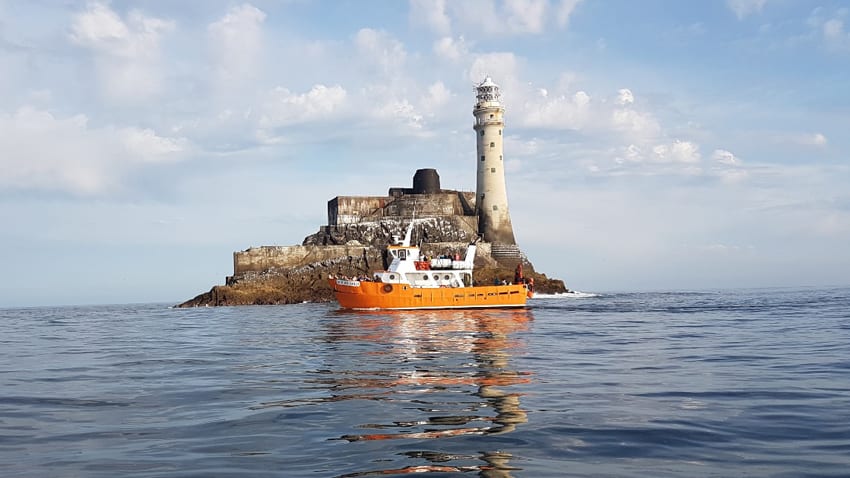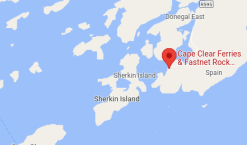Also known as Oileán Cléire
An Irish-speaking island steeped in history and heritage.
The history of Cape Clear Island is fascinating with numerous historic sites across the island ranging from ancient standing stones and Dún an Óir Castle to a 12th century church and Napoleonic look-out towers.

Following this the lighthouse was then relocated to Fastnet Rock. This takes its name from an Old Norse phrase meaning, ‘Sharp Toothed Rock’. The 54-metre cast-iron replacement took four years to complete.
Famous Fastnet Lighthouse
Fastnet Rock Lighthouse is also known as Ireland’s Teardrop as it was the last structure seen by Irish emigrants to the United States. This is the largest lighthouse ever built in Ireland and the UK and is a popular spot for boat trips today.
Cape Clear Fastnet and Heritage Center vividly illustrates this history with an impressive collection of artifacts from prehistoric to modern times.
Mysterious Cape Clear Stone
The earliest relic of civilization on the island is the Cape Clear Stone. This is the most enigmatic archaeological discovery found on any of Ireland’s islands. It points to 5,000 years of habitation.
Found in 1874, the stone features spiral and zig-zag carvings that are the hallmark of the 5,000-year-old Boyne Valley Civilisation in Newgrange, Co. Meath. Neolithic relics such as this are not normally found in Southern Ireland, much less on an island off the coast of West Cork. It continues to leave archaeologists mystified to this day.
The Bronze Age turned Cape Clear into a hub for trade between West Cork, then known for copper mining, and the tin mines of Cornwall. Indeed, the 12th century church at Cape Clear’s North Harbour is named for St Ciarán. He is also the patron saint of Cornwall under his Cornish name Piriam.
Fishing and fishermen
European cultures have long been felt on the island. Spanish and French fishermen operated around Cape Clear for centuries. A small island between Cape Clear and Baltimore harbor is called Spanish Island after these Continental seafarers.
The fishing industry supported the island’s economy for centuries. In the late 17th century, Cape Clear was home to three fish palaces where oil was extracted from fish for lamps. A 40-year fishing boom from the 1880s saw the construction of the numerous two-story slate houses, most of which remain to this day.
O’Driscoll Clan
The seafaring O’Driscoll Clan ruled for 600 years until an attack on their island fortress in 1603. Some 35 volumes of the O’Driscoll Memorial Archive is kept on Cape Clear and the island hosts an annual memorial event which attracts significant numbers of O’Driscolls each year.
Seafarers and shipwrecks
There has always been a great seafaring tradition on Cape Clear with islanders famous for bravery in rescuing shipwrecked sailors off it treacherous shores. Among a host of famous incidents was the rescue of the crew of The Nestorian in 1917, an action so daring it was later dubbed ‘The Greatest Film Never Made’. Many islanders worked as merchant seamen during the Second World War and many lost their lives in submarine war in the North Atlantic.
To find out more about Cape Clear’s interesting history and heritage, visit Cape Clear Island and the Cape Clear Fastnet and Heritage Centre.






